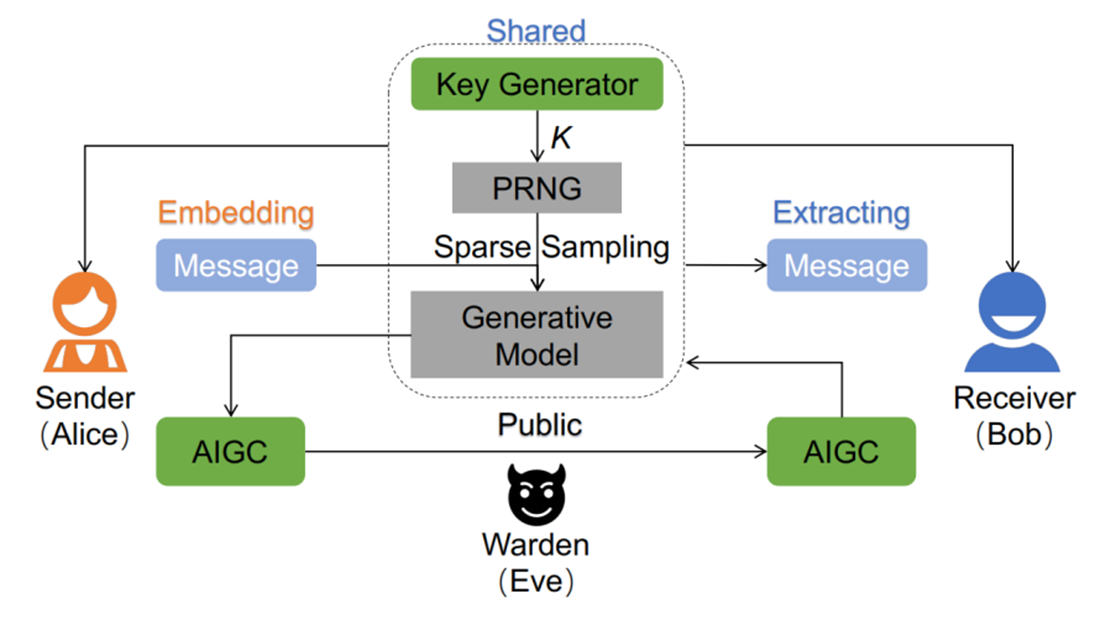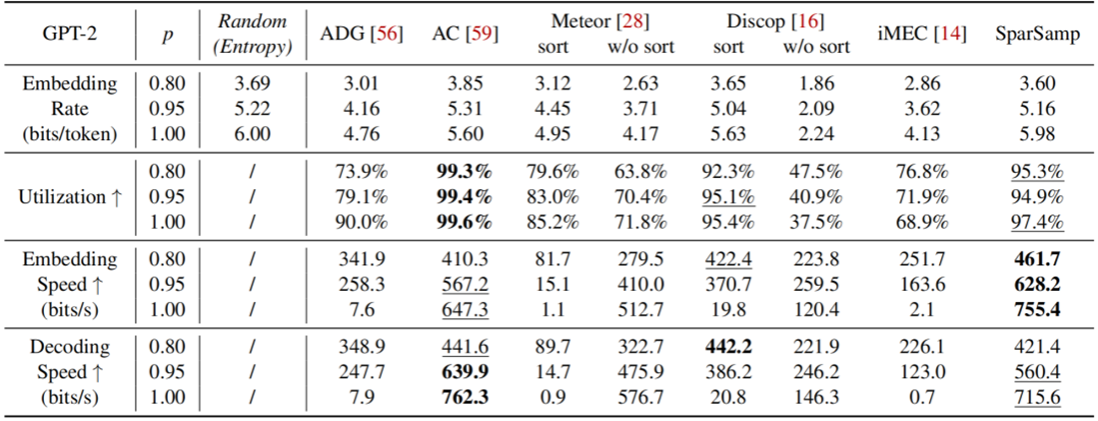In ancient times, scholars used acrostic poems to convey secrets. Today, people rely on encryption software to protect privacy and transmit intelligence. However, encryption software is too conspicuous—like stamping "encrypted" on an envelope, making it obvious that there’s a secret inside. Now, AI has mastered the art of "invisible ink"—it can hide secrets within everyday conversations, AI-generated images, and even speech, leaving no trace for even the sharpest detectives to find.
Recently, Associate Professor WANG Yaofei from our school proposed a provably secure steganographic technique, SparSamp, which has been accepted by USENIX Security 2025, one of the top conferences in Computer Security. The goal of SparSamp is simple: to turn AI-generated content (AIGC, such as DeepSeek’s responses or AI-generated artwork) into a natural "safe box" for information while ensuring maximum security, speed, and storage capacity during the hiding process.
This is the first long-form research paper from Hefei University of Technology to be accepted by USENIX Security as the first-affiliated institution, and it is also the first steganography-related academic achievement from mainland China to be accepted by USENIX Security.
Paper Title: SparSamp: Efficient Provably Secure Steganography Based on Sparse Sampling
Authors: WANG Yaofei, PEI Gang, CHEN Kejiang, DING Jinyang, PAN Chao, PANG Weilong, HU Donghui, ZHANG Weiming (Note: Professor ZHANG Weiming, Associate Professor CHEN Kejiang, and student DING Jinyang are from the University of Science and Technology of China).

Figure 1: A graphical depiction of steganography

Figure 2: A generation process of LLM

Figure 3: An example of embedding based on Sparse Sampling

Table 1: Comparison of ATST, SITR, and generation speed for different steganographic methods

Table 2: Comparison of embedding capacity and speed for different steganographic methods
Abstract: Steganography embeds confidential data within seemingly innocuous communications. Provable security in steganography, a long-sought goal, has become feasible with deep generative models. However, existing methods face a critical trade-off between security and efficiency. This paper introduces SparSamp, an efficient provably secure steganography method based on sparse sampling. SparSamp embeds messages by combining them with pseudo-random numbers to obtain message-derived random numbers for sampling. It enhances extraction accuracy and embedding capacity by increasing the sampling intervals and making the sampling process sparse. SparSamp preserves the original probability distribution of the generative model, thus ensuring security. It introduces only O(1) additional complexity per sampling step, enabling the fastest embedding speed without compromising generation speed. SparSamp is designed to be plug-and-play; message embedding can be achieved by simply replacing the sampling component of an existing generative model with SparSamp. We implemented SparSamp in text, image, and audio generation models. It can achieve embedding speeds of up to 755 bits/second with GPT-2, 5046 bits/second with DDPM, and 9,223 bits/second with WaveRNN.
USENIX Security (officially the USENIX Security Symposium) is a top-tier international academic conference in computer security. It is recognized as an A-class conference by the China Computer Federation (CCF) and is one of the "Big Four" security conferences (BIG4), alongside IEEE S&P, ACM CCS, and NDSS. The paper acceptance rate has consistently remained below 20%.
 TOP
TOP